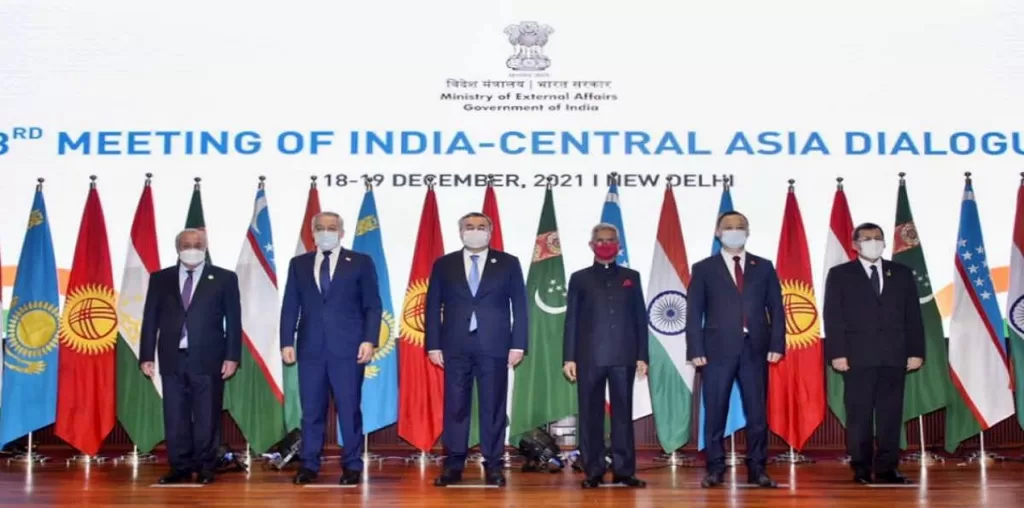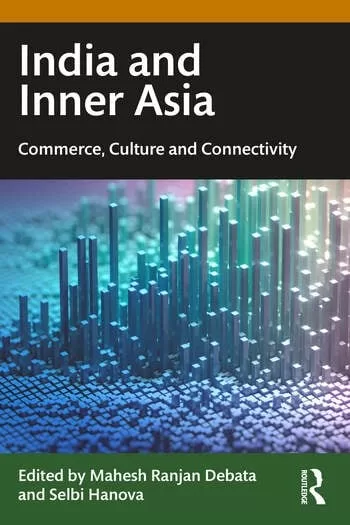The Indian quest for increasing its trading connections with the outside world has led the New Delhi-based policymakers towards Asian power politics, where the region’s power dynamics are witnessing a transitory phase. The concentration on New Delhi’s growing economic ties with the key Asian powers appeared in the literature emerged from diverse directions, and the focus of different writers on India-centric trading politics marked it as an undeniable dimension of contemporary Asian power balance.
The existing literature traces the roots of Indian emerging economic connections with the surrounding sub-regions of the broader Asian continent in the colonial era of the subcontinent in which Indian commerce flourished under colonial British rule. Akin to the ancient Silk Road, the prehistoric Indian economic guidelines laid the foundations of modern Indian trading potential, which have been highlighted in the prominent academic accounts of different scholars.

Hence, the book under review is a reflection of the modern influential trading potential of New Delhi and its significance for the major Asian economies such as Japan, South Korea, China, and various Southeast Asian nations. It is an edited book compiled by two researchers, Mahesh Ranjan Debata and Selbi Hanova, and both authors have attempted to provide a fresh account of different arguments concerning the Indian role in shaping the regional market trends of Asia. Both authors are renowned academicians; Debata is formally attached to the Centre for Inner Asian Studies at the Jawaharlal Nehru University, whereas Hanova is an independent researcher of Turkmenistan. The main structure of the book is divided into three main parts: Inner Asian Issues, Geopolitics and Geo-Economics, and Indian Connections.
These parts constitute the main arguments of the book into sixteen chapters, including the introductory and concluding sections. All chapters highlight India’s emerging trading connections with Inner Asia based on its historical ties, economic imperatives, cultural exchanges, and geopolitical strategies. These factors shape New Delhi’s connections with the leading Asian economies. All chapters written by different Indian authors, attempted to portray a picture of India’s historical and socio-cultural linkages with Inner Asia generally, and the landlocked Asian regions such as Eastern and Northern parts of Asia, mainly where China, Mongolia, Russia Far East, and Siberia are the epicenters of Indian economic interests. The authors’ arguments in sixteen chapters revolve around the issues of geopolitics, geo-economics, climate change, and regional cooperative frameworks of the Asian continent.
Inner Asian Issues, Geopolitics and Geo-Economics, and Indian Connections are the three main parts which constitute the main arguments of the book.
These arguments are based on an analysis that examines India’s influence on Inner Asia through cultural and economic means and their associations with the regional power dynamics of Asia. The authors have emphasized different topics in their respective chapters with the support of certain facts while referring to specific trading policies of modern India, such as Modi’s Look, Learn, and Act North Policy, which led New Delhi to sign various business agreements with the Inner Asian nations (p. 212).
Moreover, the Neighbourhood First Policy (p. 121) and the extension of Connect Central Asia Policy (CCAP) into Act Central Asia Policy (p. 204) are called the main components of India’s contemporary trading engagements with the surrounding nations.
Certain interesting and informative concepts and facts are mentioned in the book about modern Indian politics. These characteristics are based on eight broader themes of India-Inner Asia connections (p. 02).

These themes are
1. Ethnicity, Religion, and Culture
2. India’s Policy towards Central Asia
3. Afghanistan and Central Asia,
4. Trade,
5. Connectivity,
6. Energy,
7. Environment and
8. Geopolitics and Geostrategy.
In this way, the analysis presents a detailed account of various arguments related to India’s historical and contemporary economic ties with Inner Asia.
The book offers valuable insight into the historical and economic features of New Delhi’s increasing trading linkages with Inner Asia, which could not be separated from specific deficiencies of the book’s main structure. Its exploration of cultural exchanges is limited to Buddhism instead of emphasizing the diverse cultural interactions of Inner Asian nations and their influential role in shaping the modern societal frameworks of the region. The book’s geopolitical explanations show a conceptual bias of its contributors, centered on the Indian way of managing Asian economic affairs through different economic policies and trading agreements.
This book offers profound insights into the India-centric interconnectedness of Asian sub-regions
The mentioning of such arguments have overlooked a balanced viewpoint consisting of narratives of other Asian countries and their diverse positions in shaping the regional Asian trading landscape. As the descriptions above illustrate, this book is a well-rounded academic resource. It offers profound insights into the India-centric interconnectedness of Asian sub-regions and their emerging trading connections, all underpinned by a range of cultural exchange approaches from New Delhi. This book is not merely an academic account, but a potent tool that empowers policymakers, politicians, diplomats, and members of think-tanks. It provides a comprehensive understanding of New Delhi’s trade-specific foreign relations with other nations, and their association with the Indian broader strategic interests with the surrounding regions. For students, it is an engaging academic account that aids in comprehending the changing economic patterns between India and the Inner Asian nations.





